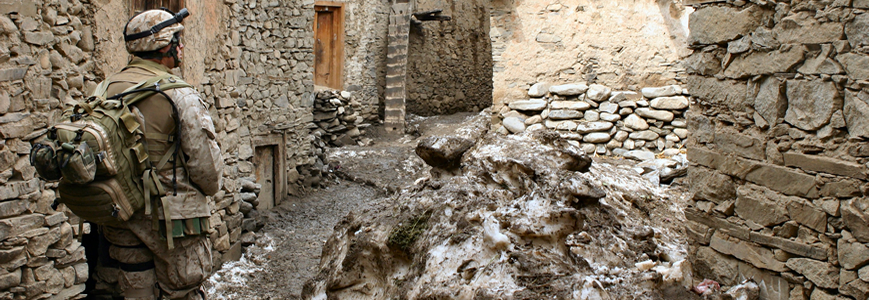Shock Tube for Better Soldier Health

The shock waves created in a pipe could help medics diagnose traumatic brain injuries in soldiers.
When a bomb explodes, it creates powerful pressure waves that can cause concussions and other traumatic brain injuries. The problem of sensing these dramatic pressure changes – in order, for example, to tell how badly a soldier might have been hurt – is therefore becoming of more and more urgent concern to public health professionals.
Military personnel are now being outfitted with pressure sensors for detecting these rapidly changing, or “dynamic,” blast waves. But different vendors offer different kinds of sensors, and none of them provides measurements that are based on the solid foundation of a national standard for dynamic pressure. Therefore, there is currently no way to judge how accurate these devices really are.
One way to assess the sensors’ performance, though, is to build a machine that creates shock waves in a controlled fashion. So NIST researchers have built a shock tube – a pipe 2.4 meters (just under 8 feet) long with an opening down its middle 5 centimeters (just under 2 inches) in diameter. The pipe is filled with a gas through which the pressure waves travel.
At one end of the tube, the pressure is raised to about six times the atmospheric pressure at sea level (in total, about 90 pounds per square inch). At the other end is a lower-pressure area studded with commercial sensors to be tested. Two thin plastic diaphragms separate the high-pressure side of the tube from the low-pressure side. When the pressure difference gets high enough, the diaphragms burst, making a pressure wave that propagates down the tube, hits the end, and reflects back.
The pipe is designed to create the same pressure wave each time the diaphragm is ruptured, allowing researchers to predict what the wave should look like under a certain set of conditions. If a commercial sensor being tested in the tube does not get the expected results, researchers can quantify its inaccuracy.
Shock tubes themselves are not novel; scientists have been using them for more than 100 years. But this one will be different from most others because it will be outfitted with a pressure sensing system that is extremely precise: The system will measure pressure by sensing the way laser light interacts directly with molecules of gas as they fly down the tube. Photonic, or light-based, detectors are also being developed that will measure the progress of the shock wave with extremely high speed and accuracy.
Knowing exactly how the shock wave in their test pipe behaves will make it possible for researchers to be more confident in their tests of commercial devices – and could even allow them to design entirely new kinds of pressure sensors that would help soldiers in the field.
Contacts
-
PML webmaster

